by Brendan Cullen
Though TikTok has attempted to prove its distance from China, PRC policies shed light on the likelihood of continued, undisclosed ties to the Chinese government. This essay will investigate how the PRC could exploit TikTok to gain a competitive advantage over the United States through information operations, propaganda, intelligence collection, and cyber-attacks. It will assess how these tactics could contribute to current PRC strategies and multi-domain operations against the U.S. This assessment is critical as tensions between the U.S. and China evolve and conflicts reshape power structures in various regions throughout the world.
The U.S. Department of Defense, in its recently released 2023 DOD Cyber Strategy, describes China as a “pacing” and “broad and pervasive” threat to the United States (DOD, 2023a). Given this designation, any platform with ties to China that hosts nearly 50% of the U.S. population should be addressed with extreme caution. This case study seeks to place the TikTok threat in its proper context by connecting the dots between vulnerabilities on social media and the PRC’s efforts to undermine the United States.
TikTok’s Strategic Value: Leveraging Cyber for Global Dominance
Modern communication technology and the informatized world afford new methods of exerting power and enable war to be conducted in unprecedented ways. As tensions continue to rise between the United States and China, the PRC’s utilization of cyber for strategic influence and warfare has been a primary focus for the U.S. Intelligence Community, national security experts, and policymakers. According to the 2023 DOD Cyber Strategy, China “seeks advantages in cyberspace in order to facilitate its emergence as a superpower with commensurate political, military, and economic influence” (DOD, 2023a). These advantages may be facilitated by controlling communications, strategically targeting information operations and psychological warfare campaigns, collecting intelligence, conducting cyber espionage, gaining access to critical systems, growing technological presence in different regions, or partnering with likeminded governments. The PRC utilizes all of these methods (and more) to reshape the world order, undermine the United States, and protect its own interests (DOD, 2023a).
While these techniques may not sound unique in comparison to other nations, the PRC places particular emphasis on cyber espionage. Collecting foreign intelligence in cyberspace presents several advantages that human intelligence often does not offer, including access to large, easily transferrable datasets and enhanced protection due to difficulty identifying a source (Wortzel, 2014). These cyber espionage efforts often include the stealing of intellectual property, trade secrets, and sensitive military information from the United States (Laskai & Segal, 2018). Espionage can support internal operations in China and promote the economy, but it can also enable the People’s Liberation Army (PLA) to prepare for future conflict. By stealing valuable scientific and technological information from other countries, the PRC can save its own time and resources for the rapid development of rival military technologies (Wortzel, 2014).
The same can be said for China’s collection of foreign social data—understanding an enemy’s values, activity, and fault lines can make easier the task of military forces. China’s use of spies and intelligence collection has roots over a thousand years old, dating back to the writings of Sun Tzu. While the means for executing may be different, the idea remains the same: degrade the capacity of the adversary to fight back. Social media can be used to power targeted information operations that prepare for and supplement other operations. TikTok’s massive scale usage in the United States and extraordinary collection of data provides the PRC a double-edged sword with strategic and operational value.
China is said to aggregate immense amounts of data from various mediums for potential future use. This approach has been referred to as a “grains of sand” or “mosaic” strategy, originating from a popular quote in the world of security:
“If the Russians want to get certain sand from a beach that’s special, they’ll have a submarine come in at night. […] They’ll get a bucket full of sand, and they’ll take it back to the submarine and leave. The Chinese will have 500 people having picnics on the beach, each picking up the sand in a small can (or, each picking up a grain of sand), and bringing it back” (Smith, 2023).

Seemingly irrelevant datapoints may prove valuable for social engineering campaigns and future operational propaganda. The PRC is able to covertly collect intelligence and conduct espionage operations through corporate proxies and by infiltrating the U.S. supply chain. TikTok enables the PRC to collect valuable social data, construct and influence target audiences, track expatriates, and open avenues for future operations under the façade of a harmless, creativity-promoting platform. Social media is only one aspect of the PRC’s larger effort to erode the competitive advantage of the United States and establish global dominance. The PRC seeks to penetrate the U.S. information ecosystem and physical, technological infrastructure through a 2013 foreign economic strategy known as the Belt and Road Initiative (BRI).
The BRI, according to a report from the Congressional Research Service, “aims to develop China-centered and – controlled global infrastructure, transportation, trade, and production networks”, which, “focuses on infrastructure, and related supply chain, transportation, technology and financial integration that expands the use of China’s credit information system and currency” (CRS, 2023c). The BRI seeks to establish Chinese firms overseas, employ PRC citizens abroad, and open new avenues for monetization, trade, and influence (CRS, 2023c). To the concern of the United States, the PRC’s strategic investment and corporate governance are typically state-sponsored and concentrated in regions of shared critical interest to the U.S. Many intelligence analysts argue that the BRI serves alternate, military purposes, and that the PRC wants to establish, “standards that promote civilian and military interoperability and could make foreign infrastructure such as ports available for China’s military use” (CRS, 2023c).
This concern largely arises from the digital influence aspect of the BRI, which includes the social media ecosystem. The “Digital Silk Road”, a component of the BRI, seeks to enhance China’s presence in overseas information and communications technology (ICT). Tech-giants such as Huawei and Alibaba, who answer to the central government, conduct operations in regions determined by the BRI and seek to implement foundational tech infrastructure (CRS, 2023c). The Belt and Road Initiative provides the PRC with access to critical infrastructure and (potentially sensitive) information environments in both the U.S. and developing regions of particular interest to the U.S. Through the Digital Silk Road, the PRC wants to infiltrate the supply chains of smart-cities, 5G communications, artificial intelligence (AI), fiber-optic cables, surveillance technology, satellite networks, transportation, vaccine development, and renewable resources (CRS 2023c; Gering, 2023). This essat argues that the BRI is reflected in the PRC’s use of social media for cyber dominance.
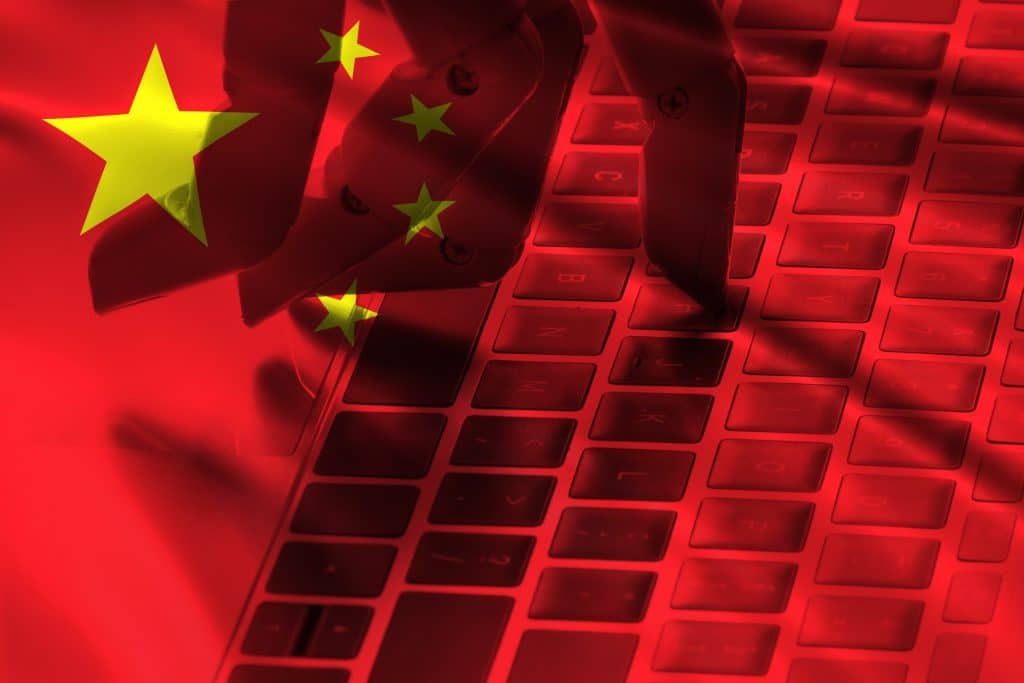
The targets of the Digital Silk Road are aspects of what the PLA calls the “virtual battle space” (Wortzel, 2014, p. 8). Within each of these abovementioned sectors of infrastructure lies a potent attack surface. The PRC maintains control of critical switches in target countries, including ones that do not support the BRI due to globalization and the ubiquity of technology. According to Wortzel, PRC strategists argue awareness is at the core of warfare in the information age. Therefore, the destruction of an enemy’s ability to understand their surroundings through information could uproot their ability to attack (Wortzel, 2014, p. 7).
The ability to deactivate methods of communications or paralyze the information ecosystem is a valuable weapon in modern warfare. Sabotaging an enemy’s collective understanding is a key strategy of the PLA and will be examined in the context of social media throughout the following subsection. In addition to these tactics, the PRC has the capacity to leave backdoors embedded within critical infrastructure and technology through the Digital Silk Road. These backdoors can be strategically placed for future attacks, once the potential scale and damage of the intended attack is optimal (Wortzel, 2014). Aside from cyber warfare operations, the PRC could utilize corporate proxies and espionage to collect intelligence on a region, particular leader, critical infrastructure sector, or emerging technology.
China’s policies on cybersecurity and intelligence enable the harvest of data acquired by enterprises backed by the state. As the previous section discussed, TikTok’s relationship to its parent company ByteDance reveals a connection to the CCP that cannot be overlooked. Therefore, TikTok poses a threat to U.S. National Security due to policies that coerce PRC-based citizens and companies to comply with China’s intelligence collection efforts. In 2019, the former U.S. National Counterintelligence and Security Center (NCSC) Director, William Evanina, issued a warning on how China extracts information from institutions that claim they are not owned by the government nor conduct business in China:
“Article 7 of China’s National Intelligence Law states, “Any organization or citizen shall support, assist, and cooperate with state intelligence work in accordance with the law, and maintain the secrecy of all knowledge of state intelligence work.”
Article 28 of China’s Cybersecurity Law states, “Network operators shall provide technical support and assistance to public security organs and national security organs that are safeguarding national security and investigating criminal activities in accordance with the law.”
Article 11 of China’s National Security Law states, “All citizens of the People’s Republic of China …. shall have the responsibility and obligation to maintain national security.”
What does this mean for you? If you’re doing business in China or representing clients there, you will likely be a target” (Evanina, 2019).
By nature of these laws, companies acting at the discretion of the PRC are an arm of the Chinese government. These laws help the PRC exercise power abroad, prepare malign influence operations, and monitor expatriates, who are considered threats to the state. While TikTok claims they do not provide data to the CCP or PRC, Beijing-based ByteDance and its PRC-citizen employees could be required by law to provide information acquired by TikTok to the government. According to the company’s website, ByteDance has over 110,000 employees based out of 200 cities globally, and its apps operate in 150 markets and 35 languages (ByteDance, 2023). ByteDance has offices in major U.S. cities such as New York, Washington, D.C., Chicago, Austin, and more.

The Chinese media giant even showcases a picture of Manhattan, New York on its ‘Jobs’ site (ByteDance, 2023). In addition to the abovementioned federal laws, private companies that operate in China and employ CCP members have been pressured to establish internal CCP cells that promote party-aligned decision-making. It has been reported that employees at HSBC, for example, have formed internal CCP committees though the company claims these cells have no influence on the overall business (Morris & Kinder, 2022). These policies and examples represent the global network of corporate entities with influential power that are the PRC’s disposal.
The United States has already taken action to prevent investment in and cooperation with Chinese companies that threaten national security and undermine democracy. In November of 2020, the Trump administration issued Executive Order (E.O.) 13959 to respond to the threat that the PRC poses to the U.S. through its use of private companies to expand its military-industrial complex and intelligence apparatus (Exec. Order No. 13959, 2020). In 2021, the Biden administration expanded upon this E.O by prohibiting U.S. investment and cooperation with such Chinese companies. The Biden administration targeted 58 entities that supported China’s defense, intelligence, and surveillance technology sectors, including the well-known companies Hangzhou Hikvision Digital Technology Co., Ltd. and Huawei Technologies Co., Ltd (The White House, 2021). This thesis contends that TikTok should also be considered as an extension of China’s military-industrial complex and addressed with the same level of caution.
Prior to any assessment of TikTok’s operational value, its connection to the CCP via its parent-company ByteDance presents a unique threat to the United States. Social media can amplify the potency and scale of cyber operations and enable threat actors to collect an unprecedented amount of intelligence on a target audience. TikTok’s addiction-promoting design and extensive collection of user data have helped establish itself as a leading social platform in America, especially for young users. Due to PRC policies that compel its constituents to provide information that assists national security and intelligence efforts, TikTok fundamentally is a tool for global surveillance and intelligence collection.
This essay argues that TikTok complements other PRC strategies such as the Belt and Road Initiative. TikTok’s integration with U.S. citizens provides the PRC a stream of social data that can be exploited to influence and undermine the U.S. This section has presented evidence that details what TikTok’s connection is to the PRC’s broader goals in cyberspace. Using recent examples and PLA strategy, the next section will assess how TikTok could be used in multi-domain operations against the U.S. if weaponized.

TikTok’s Operational Value: Weaponizing Social Media
The PRC has recognized the value of leveraging social media in multi-domain operations. The PRC considers the information ecosystem a critical battleground to be won early in conflict and dominated in both war and peacetime. The informatized world has blurred the lines between military personnel and civilians and between war and peace (Cheng, 2013). This new gray area demands that countries take constant steps to dominate the information ecosystem in order to maintain power. To meet these demands, the PLA adopted a new warfare strategy in 2003 known as the “Three Warfares”: legal warfare, public opinion warfare, and psychological warfare (Wortzel, 2014).
Public opinion warfare creates, disseminates, and conceals information to gain domestic and foreign support for a cause or steer the enemy’s public opinion. Legal warfare leverages international and domestic laws to generate narratives that support the PRC’s interests, justify the PRC’s actions, and undermine the enemy. The PRC uses psychological warfare to deceive and coerce the enemy into behaving in a manner that supports the PRC’s interests or corrupts the enemy’s capacity to respond (Cheng, 2013; Wortzel 2014). The PLA seeks to combine these operations in cyberspace to create an environment that promotes the PRC’s strategic and military objectives (Cheng, 2013).
The PLA appreciates social media’s power, especially during crises, to promote narratives, gain support, and undermine an adversary’s resolve to engage in conflict. While China’s lockdown media ecosystem helps to defend against foreign influence, the openness of the U.S. market leaves users susceptible to Chinese-IO campaigns. Social media platforms enable the PRC to reach the U.S. audience discretely, cheaply, and effectively. The massive, Chinese-backed, cross-platform covert influence network discovered by Meta is a perfect example of the “Three Warfares” concept in action. Other platforms are plagued by similar influence networks controlled by the PRC.
In 2020, Twitter (now “X”) disclosed a PRC-linked IO network that consisted of 23,750 highly engaged, “core” accounts, and approximately 150,000 “amplifier” accounts that engaged with the core accounts and artificially inflated engagement metrics. While this network was quickly detected and removed, it promoted content that was “predominantly in Chinese languages and spreading geopolitical narratives favorable to the Communist Party of China (CCP), while continuing to push deceptive narratives about the political dynamics in Hong Kong” (X Blog, 2020). The PRC has since taken steps to improve the effectiveness of its IO by incorporating technological advancements.

The PRC has developed a new psychological warfare strategy for the informatized world known as “Cognitive Domain Operations” (CDO). According to a DOD Report to Congress, “CDO blends previous Chinese concepts such as public opinion and psychological warfare with modern internet technologies and communication platforms, and is designed to achieve strategic national security goals by affecting a target’s cognition and resulting in a change in the target’s decision making and behavior” (DOD, 2023b).
This strategy seeks to evolve current psychological warfare operations by leveraging AI, big data, neuroscience, and other emerging fields (DOD, 2023b). According to PLA articles, the goal of CDO is to achieve “mind dominance” which will help to subdue an enemy without fighting (DOD, 2023b). Data harvested from TikTok can supplement the potency and scale of Chinese CDO and provide a susceptible target audience. Additionally, deepfake technology and other AI-powered tools could increase the effectiveness of targeted IO and public opinion warfare on TikTok. As these emerging technologies evolve, PRC methods of informatized warfare will grow into “intelligentized” warfare, presenting new challenges to U.S. National Security (Stockton, 2021).
The PLA seeks to advance cognitive operations on social media. According to a recent People’s Liberation Army Daily article, “cognitive confrontation” on social media is a key element of successful multi-domain operations (Wenling & Jiali, 2023). The People’s Liberation Army Daily is the official newspaper of the PLA. This source is valuable for understanding how the PRC could weaponize TikTok on a macro-scale, and begins with the following statement:
“The ‘invisible control’ of social media in issue planning, the ‘invisible embedding’ of information production, and the ‘seamless link’ in information dissemination methods can effectively achieve an ‘invisible’ impact on the audience” (Wenling & Jiali, 2023).
The article details four main types of confrontation acts: “information disturbance”, “discursive competition”, public opinion, and “information blocking” (Wenling & Jiali, 2023). TikTok could be used as a vehicle for each of these cognitive warfare methods. According to the article, information disturbance manipulates the target audience’s perception of real circumstances, resulting in a chain reaction of public confusion and distorted viewpoints (Wenling & Jiali, 2023). TikTok, due to its recommendation-algorithm, can rapidly disseminate misinformation and disinformation. It is important to note here that the weaponization of TikTok does not have to be directly controlled by the PLA or Chinese Government in order to promote its strategic interests. Effective IO feeds off the existing landscape of narratives and selectively intervenes when advantageous. In this manner, official control is only needed as an “invisible hand” and TikTok can operate as a user-controlled weapon (Wenling & Jiali, 2023).

The recent Israel-Hamas War provides a potential example of how TikTok could shape collective understanding, with and without deliberate interference. The hashtag “#Palestine” has received 27.8 billion views on TikTok and “#Israel” has received 23 billion (Lorenz, 2023). Shou Zi Chew, TikTok’s CEO, has publicly countered claims that TikTok’s algorithm amplifies antisemitism and has taken steps to remove such content (Maheshwari, 2023). According to a recent Pew Research study, 32% of U.S. adults aged 18 to 29 say they regularly get news on TikTok. Additionally, 43% of TikTok users say they regularly get news from the platform (Matsa, 2023). These statistics reveal a potential target audience for Cognitive Domain Operations, IO, and propaganda. Through TikTok, the PLA can not only generate and amplify narratives that align with the PRC’s interest, but also drive users to ideological extremes, sow confusion through disinformation, or even flood users’ feeds with irrelevant content.
Furthermore, many political leaders have TikTok accounts. If an adversary could gain access to a leader’s account (or use deepfake technology to impersonate one), threat actors could undermine domestic and foreign relations or exploit existing political fault lines during a regional crisis like the Israel-Hamas War (Stockton, 2021). Active participation by citizens is critical to the function of democracy. The ability to erode collective understanding can impact public opinion and consequentially, administrative decisions. Even though the tangible effect of IO is difficult to see, using TikTok as the vehicle could still provide the PRC with valuable social data to be operationalized during future conflicts.
The PRC wants to control and exert influence via social media during war and peacetime. This thesis argues that TikTok has operational value outside of traditional attempts to politically polarize U.S. citizens and degrade collective understanding. Propelling users to any extreme could prove valuable for future IO or social engineering attacks. An experiment conducted by The Wall Street Journal demonstrated that TikTok’s ‘For You’ page had a shocking tendency to recommend extreme content to users.
Researchers from the Journal set up fake accounts that, undisclosed to TikTok, had predetermined interests such as forestry, politics, or depression. Each bot only expressed interest by rewatching or pausing on videos that aligned with its predetermined interest. The team discovered that after only 36 minutes of total watch time (224 videos), a bot with the assigned interests of “depression” and “sadness” was predominantly recommended videos about mental health struggles and depression (WSJ Staff, 2021). In fact, 93% (278 videos) of the videos recommended to the account were related to sadness or depression. The majority of the remaining 7% of videos were advertisements.
Similar outcomes were reached by other bots—an account with an interest in sexual content was propelled to content promoting sexual power dynamics, while another account with an interest in politics was later served election conspiracies and QAnon videos. While TikTok executives said this experiment does not accurately represent the diverse interests of the average user, it still provides evidence that supports TikTok’s capacity to propel users to extremes (WSJ Staff, 2021).
Considering half of the U.S. population uses TikTok, this manipulative power can be leveraged to undermine democracy and create fault lines in public opinion. The most recent example of extremist content on TikTok is the recent virality of Osama Bin Laden’s ‘Letter to America’ (Moench & Shah, 2023). Just over a month after Hamas’ invasion of Israel, videos with the hashtag “#lettertoamerica” have amassed 14 million views in just one day.

The letter justifies the murders of 9/11 citing U.S. and other foreign-sponsored violence against Muslims and condemns U.S. support for Israel. In one video that had over 900,000 views, a user claimed that “everything we learned about the Middle East, 9/11, and ‘terrorism’ was a lie” (Moench & Shah, 2023). This surge prompted TikTok to aggressively remove content that promoted the letter (Moench & Shah, 2023). The opacity of TikTok’s recommendation system enables such content to be rapidly spread covertly due to attribution issues. The PRC and non-state threat actors can strategically coerce individuals to similar extremes or exploit these susceptible users in future attacks.
TikTok’s ability to quickly understand users’ interests and target extreme content can be applied to social engineering and cyber operations. As discussed earlier in this section, TikTok provides the PRC with valuable intelligence that can support malicious operations. But like other social platforms, TikTok can be used as the actual vehicle for operations as well. The “Invisible Body” incident is a great example of TikTok being used as the medium for a cyber operation. In 2022, a trending challenge on TikTok was to record a video naked and then use TikTok’s “Invisible Body” filter to replace their body with a blurred background (Collins, 2022).
Hackers exploited this trend by posting videos that promoted ‘software’ that could remove the filter and reveal the user. In reality, users were actually coerced into downloading software that could “harvest Discord account details, stored credit cards, passwords, cryptocurrency wallets and other computer files” (Collins, 2022). In theory, similar operations could target U.S. government officials and military personnel.
In an effort to secure its systems and prevent malign influence, the DOD banned TikTok from devices issued by the Federal Government. Additionally, more than two dozen states have banned TikTok from government issued devices, and many colleges (including the University of South Carolina) have banned TikTok from their campus networks (Maheshwari & Holpuch, 2023). While these efforts are a step in the right direction, they do not fully address the threat that TikTok poses to U.S. National Security. Malicious operations that target military and government personnel can circumvent these policies in several ways. Firstly, and most obviously, these state and federal employees can still access TikTok from their personal phones. Let’s say, for example, a high-ranking U.S. Government Official regularly uses TikTok on their personal phone and is victim to the abovementioned “Invisible Body” attack. Threat actors might be able to gain access to confidential information, sensitive documents, or valuable personal information. While the same operation could be conducted on any social platform, TikTok’s connection to the PRC could lead to larger implications for national security.
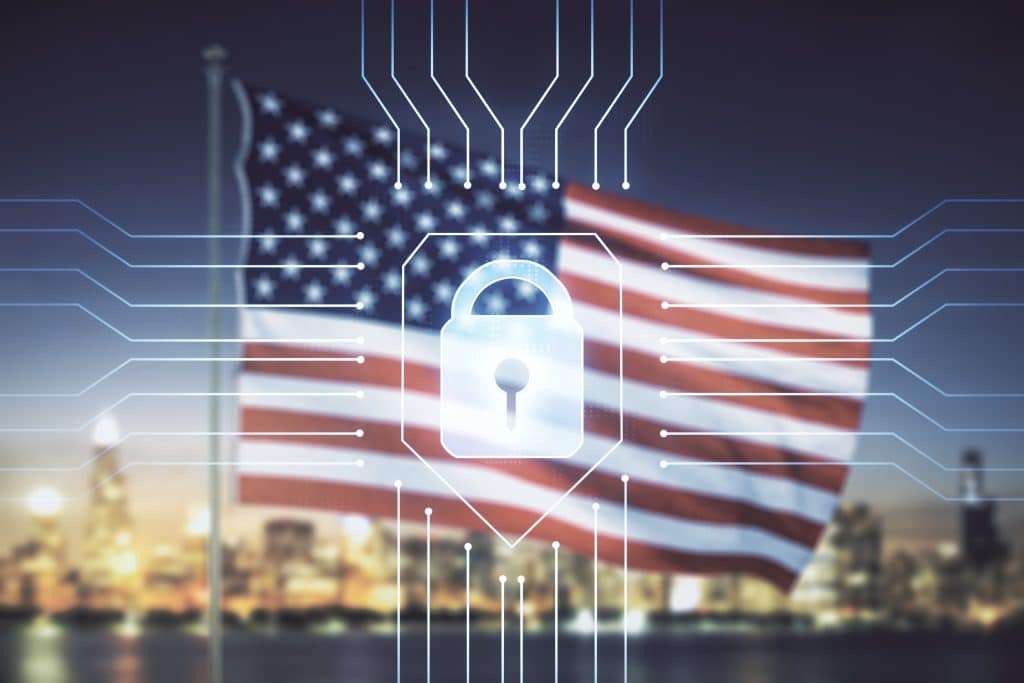
Secondly, the aggregation of user data on TikTok enables accurate target profiles to be constructed, which could include the target’s constituents, friends, colleagues, spouses, doctors, children, and more. Although a military intelligence officer, for example, may not use TikTok—maybe his spouse or children do. Valuable intelligence could be collected from a high-value target’s associates and social connections. In a similar attack to the “Invisible Body”, attackers might inject malware into this fictitious military officer’s home-network via a family member’s TikTok to conduct espionage or launch further cyber operations. PRC-based threat actors might target this officer’s doctor or other constituents that possess valuable personal information which could be used as leverage in future attacks. TikTok’s massive active user base in the U.S. enables the PLA to covertly conduct devastating operations like these at scale. While these examples do not detail the specific TTPs (tactics, techniques, and procedures) of actual attacks, they do help to depict the full scope of the TikTok threat.
The “pacing threat” that the PRC poses to the United States’ competitive advantage is reflected in its military strategy (DOD, 2023b). The PRC’s national strategy to “achieve the great rejuvenation of the Chinese nation” by 2049 is indicative of the country’s ability to ‘play the long-game’ (DOD, 2023b). This slow, pervasive strategy seeks to reshape the world order to be in favor of the PRC’s interests and to establish China as the leading world power. This strategy is supported by the PRC’s efforts to conduct espionage and collect any available intelligence that could prove useful in later operations. Even if American policymakers are not convinced of TikTok’s current operational threat potential, it is critical that the U.S. take action to protect itself against future PRC operations.
This section has evaluated TikTok’s capacity to be weaponized. While other platforms in the social media ecosystem have a similar capacity, TikTok’s connection to the PRC poses a unique threat. The PRC notoriously uses seemingly innocuous companies to exert power and gain access to critical infrastructure and technologies. The United States, as discussed in this section, has taken action against companies that advance the PRC’s military-industrial complex abroad. The United States’ sanctions target Chinese defense and surveillance technology companies, yet they do not address TikTok. Considering the platform’s popularity and pervasiveness in America, U.S. policymakers and national security experts must regard TikTok as an extension of the PRC’s military-industrial complex.
This section’s research demonstrates TikTok’s potential to be used for espionage and social surveillance. Furthermore, the PLA has publicly detailed its goals of establishing an invisible dominance on social media (Wenling & Jiali, 2023). The PRC’s efforts to aggressively collect intelligence are well-documented. As TikTok’s active user base in the U.S. grows and users spend more time on the platform, the operational and strategic value of TikTok increases exponentially. Ignoring the TikTok threat, or failing to place it in its proper context, allows the PRC to collect intelligence and further develop an influence weapon within America’s borders. Therefore, the United States should not hesitate to confront and neutralize the TikTok threat.
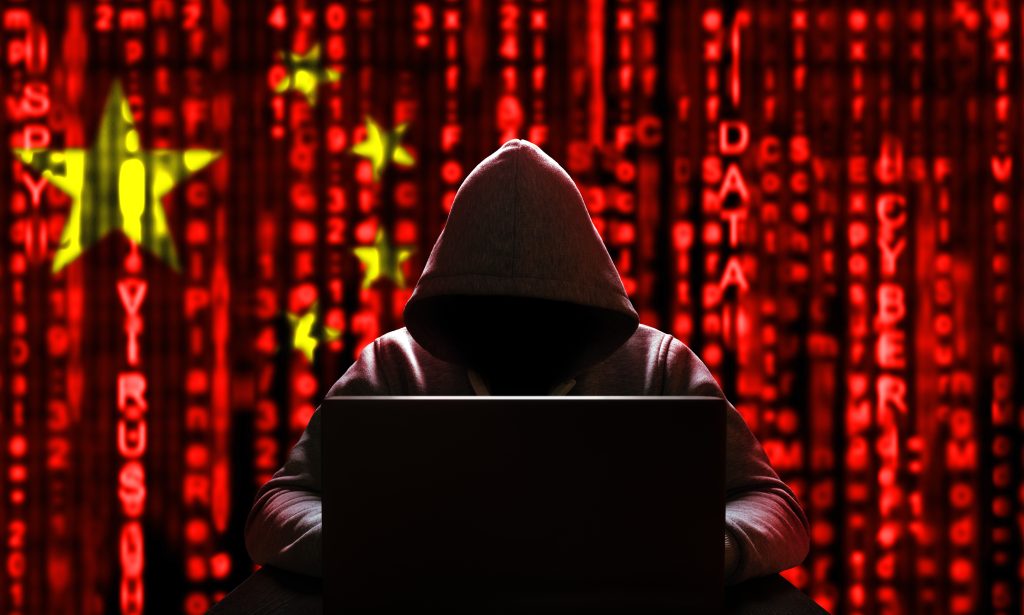
Conclusions
Although the threat that TikTok poses to national security has been the focus of many recent congressional hearings, its presence in the United States persists and grows. TikTok has distinguished itself from other popular platforms due to its extensive collection of user data, powerful recommendation algorithm, addictive design, sudden growth, and prevalence among children. While the broader social media ecosystem yields a potent attack surface, TikTok’s clear connection to the People’s Republic of China via its parent company, ByteDance Ltd., presents a unique threat. PRC policies coerce Chinese citizens, companies, and foreign businesses that operate in China to support its intelligence and national security efforts.
Furthermore, social media is a critical aspect of the PRC’s strategies for global cyber dominance. The People’s Liberation Army has publicly detailed its use of social media in warfare, which further supports TikTok’s capacity to be weaponized. The United States has failed to mitigate the actual and potential threat that TikTok poses to U.S. National Security. This thesis concludes that TikTok, and the broader social media ecosystem, should be viewed as highly effective mediums for collecting intelligence, targeting information operations, and strategically influencing public perception and behavior. The United States must take action to protect its citizens, assets, and competitive advantage in the social media ecosystem.
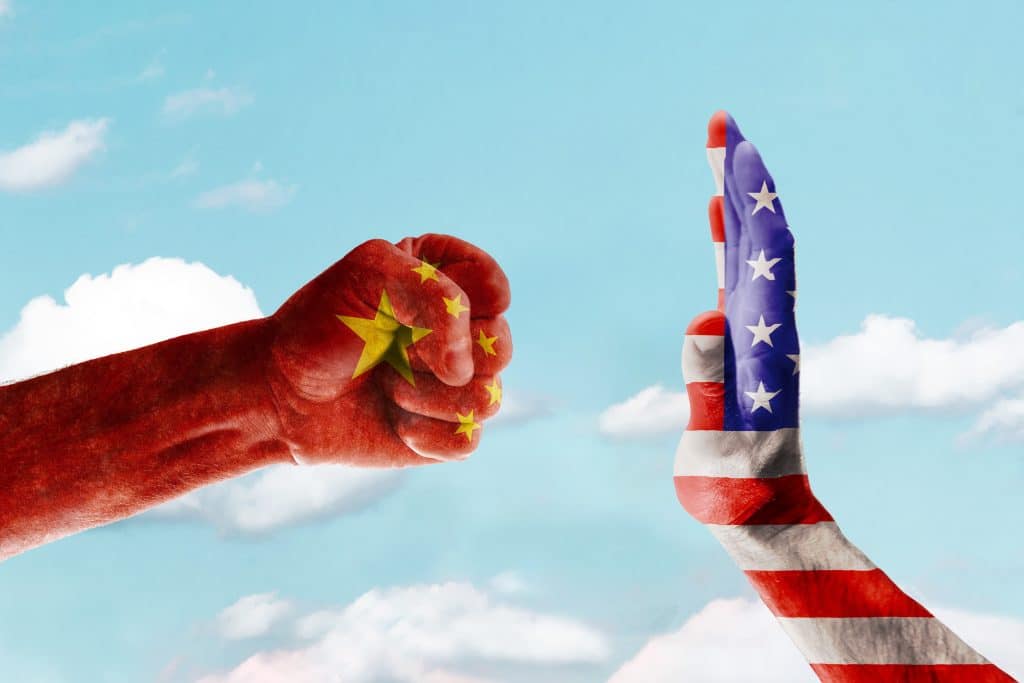
___________________________________
Brendan Cullen is a senior Cyber Policy & Ethics and Criminology & Criminal Justice double major at the University of South Carolina Honors College. Brendan is a prospective Master of Science in Global Security, Conflict, and Cybercrime (MSGSCC) student at NYU’s School of Professional Studies. Brendan has experience interning as a Summer Security Analyst for Related Companies, and as an Undergraduate Research Assistant for the University of South Carolina’s Social Media Insights Lab.
He has also served as a Part-Time Consultant for Moth+Flame VR, an immersive training technology developer, for almost two years. Brendan’s undergraduate Honors Thesis, “Assessing the Threat of Social Media to National Security: Information Operations in the 21st Century,” investigates social media’s capacity for malign influence and espionage. Specifically, his research assesses the threat that TikTok poses to U.S. National Security.
As the Voice of the Veteran Community, The Havok Journal seeks to publish a variety of perspectives on a number of sensitive subjects. Unless specifically noted otherwise, nothing we publish is an official point of view of The Havok Journal or any part of the U.S. government.
References
Apptopia. (2023). Leading mobile apps worldwide in 2022, by downloads (in millions). Statista. https://www.statista.com/statistics/1285960/top-downloaded-mobile-apps-worldwide/.
ByteDance. (n.d.). Corporate Structure. https://www.bytedance.com/en/.
ByteDance. (n.d.). Locations. https://jobs.bytedance.com/en/footprint.
Cheng, D. (2003). Winning without fighting: the Chinese psychological warfare challenge. The Heritage Foundation. https://www.heritage.org/global-politics/report/winning-without-fighting-the-chinese-psychological-warfare-challenge.
Chew, S. (2022). Letter to Senators Blackburn, Wicker, Thune, Blunt, Cruz, Moran, Capito, Lummis, and Daines. https://www.blackburn.senate.gov/services/files/A5027CD8-73DE-4571-95B0-AA7064F707C1.
Collins, B. (2022). TikTok ‘Invisible Body Challenge’ hijacked to spread malware. Forbes. https://www.forbes.com/sites/barrycollins/2022/11/29/tiktok-invisible-body-challenge-hijacked-to-spread-malware/?sh=9953ab078ad1.
Congressional Research Service. (2023b). TikTok: Technology Overview and Issues. https://crsreports.congress.gov/product/pdf/R/R46543.
Congressional Research Service. (2023c). China’s “One Belt, One Road” Initiative: Economic Issues. https://crsreports.congress.gov/product/pdf/IF/IF11735.
Evanina, W. (2019). “NCSC Director Warns of Nation-State Cyber Threats to Law Firms in June 4 Remarks at ILTA LegalSEC Summit 2019”. The Office of the Director of National Intelligence. https://www.dni.gov/index.php/ncsc-newsroom/3346-ncsc-director-warns- of-nation-state-cyber-threats-to-law-firms-in-june-4-remarks-at-ilta-legalsec-summit-2019.
Exec. Order No. 13959. (2020). 85 FR 73185. https://www.federalregister.gov/d/2020-25459.
Gering, T. (2023). “Full throttle in neutral: China’s new security architecture for the Middle East”. Atlantic Council. https://www.atlanticcouncil.org/in-depth-research-reports/issue-brief/full-throttle-in-neutral-chinas-new-security-architecture-for-the-middle-east/.
Humphries, M. (2021). China’s TikTok adds mandatory 5-second pause between videos. PcMag. https://www.pcmag.com/news/chinas-tiktok-adds-mandatory-5-second-pause-between- videos#:~:text=As%20the%20South%20China%20Morning,too%20long%20continuousl y%20watching%20videos.
Iqbal, M. (2023). TikTok revenue and usage statistics. BusinessOfApps. https://www.businessofapps.com/data/tik-tok-statistics/.
Kaye, D. B. V., Chen, X., & Zeng, J. (2021). The co-evolution of two Chinese mobile short video apps: Parallel platformization of Douyin and TikTok. Mobile Media & Communication, 9(2), 229-253.
Laskai, L., & Segal, A. (2018). A new old threat: Countering the return of Chinese industrial cyber espionage. Council on Foreign Relations. http://www.jstor.org/stable/resrep29903.
Lee, J. A. (2018). Great firewall. The Chinese University of Hong Kong Faculty of Law. Research Paper No. 2018-10.
Lorenz, T. (2023). Why TikTok videos on the Israel-Hamas war have drawn billions of views.The Washington Post. https://www.washingtonpost.com/technology/2023/10/10/tiktok-hamas-israel-war-videos/.
Maheshwari, S. (2023). TikTok’s C.E.O. uses personal touch to address antisemitism concerns. The New York Times. https://www.nytimes.com/2023/12/01/business/shou-chew-tiktok- antisemitism.html.
Maheshwari, S. & Holpuch, A. (2023). Why countries are trying to ban TikTok. The New York Times. https://www.nytimes.com/article/tiktok-ban.html.
Matsa, K. (2023). More Americans are getting news on TikTok, bucking the trend seen on most other social media sites. Pew Research Center. https://www.pewresearch.org/short- reads/2023/11/15/more-americans-are-getting-news-on-tiktok-bucking-the-trend-seen-on-most-other-social-media-sites/.
Moench, M. & Shah, S. (2023). Why Osama bin Laden’s ‘Letter to America’ went viral on TikTok. Time. https://time.com/6336280/osama-bin-laden-letter-to-america-tiktok/.
Morris, S. & Kinder, T. (2022). HSBC installs Communist party committee in Chinese investment bank. Financial Times. https://www.ft.com/content/eac99fd9-0c30-4141- 821a-45348f61c113.
Mozur, P., Mac, R., & Che, C. (2022). TikTok browser can track users’ keystrokes, according to new research. The New York Times. https://www.nytimes.com/2022/08/19/technology/tiktok-browser-tracking.html.
Perkins, T. (2022). TikTok Analysis. Internet 2.0. https://tinyurl.com/39x7m5zt.
Radesky, J., et al. (2023). Constant Companion: A Week in the Life of a Young Person’s Smartphone Use. Common Sense & C.S. Mott Children’s Hospital. https://www.commonsensemedia.org/sites/default/files/research/report/2023-cs-smartphone-research-report_final-for-web.pdf.
Smith, H. (2023). Chinese spies are targeting access, not race. Foreign Policy. https://foreignpolicy.com/2023/09/22/china-spying-race-intelligence-targeting/.
Stockton, J. (2021). Defeating Coercive Information Operations in Future Crises. The Johns Hopkins University Applied Physics Laboratory LLC. https://www.jhuapl.edu/sites/ default/files/2022-12/DefeatingCoerciveIOs.pdf.
The White House. (2021). FACT SHEET: Executive Order Addressing the Threat from Securities Investments that Finance Certain Companies of the People’s Republic of China. https://shorturl.at/vIMNR.
TikTok. (2023a). Privacy Policy. https://www.tiktok.com/legal/page/us/privacy-policy/en.
TikTok. (2023b). Children’s Privacy Policy. https://www.tiktok.com/legal/page/global/childrens- privacy-policy/en.
TikTok Newsroom. (2023). Celebrating our thriving community of 150 million Americans. https://newsroom.tiktok.com/en-us/150-m-us-users.
U.S. Department of Defense. (2023a). 2023 DOD Cyber Strategy Summary.
U.S. Department of Defense. (2023b). Military and Security Developments Involving the People’s Republic of China. https://media.defense.gov/2023/Oct/19/2003323409/-1/-1/1/2023-military-and-security-developments-involving-the-peoples-republic-of-china.pdf.
Vogels, E., Gelles-Watnick, R., & Massarat, N. (2022). Teens, Social Media and Technology 2022. Pew Research Center. https://www.pewresearch.org/internet/2022/08/10/teens-social-media-and-technology-2022/.
Wayt, T. (2021). Douyin, Chinese version of TikTok, adds time limit for kids under 14 and bans nighttime use. New York Post. https://nypost.com/2021/09/20/chinese-version-of-tiktok-adds-time-limit-for-kids-bans-nighttime-use/.
Wells, G. (2023). TikTok employees say executive moves to U.S. show China parent’s influence. The Wall Street Journal. https://www.wsj.com/tech/tiktok-employees-say-executive-moves-to-u-s-show-china-parents-influence-ef5ff21f.
Wenling, D. & Jiali, L. (2023). Cognitive confrontation on the social media battlefield. People’s Liberation Army Daily.
Wortzel, L. M. (2014). The Chinese People’s Liberation Army and Information Warfare. Strategic Studies Institute, US Army War College. http://www.jstor.org/stable/resrep11757.
WSJ Staff. (2021). Inside TikTok’s algorithm: A WSJ video investigation. The Wall Street Journal. https://www.wsj.com/articles/tiktok-algorithm-video-investigation- 11626877477.
X Blog. (2020). Disclosing networks of state-linked information operations we’ve removed. X. https://blog.twitter.com/en_us/topics/company/2020/information-operations-june-2020.
Buy Me A Coffee
The Havok Journal seeks to serve as a voice of the Veteran and First Responder communities through a focus on current affairs and articles of interest to the public in general, and the veteran community in particular. We strive to offer timely, current, and informative content, with the occasional piece focused on entertainment. We are continually expanding and striving to improve the readers’ experience.
© 2024 The Havok Journal
The Havok Journal welcomes re-posting of our original content as long as it is done in compliance with our Terms of Use.

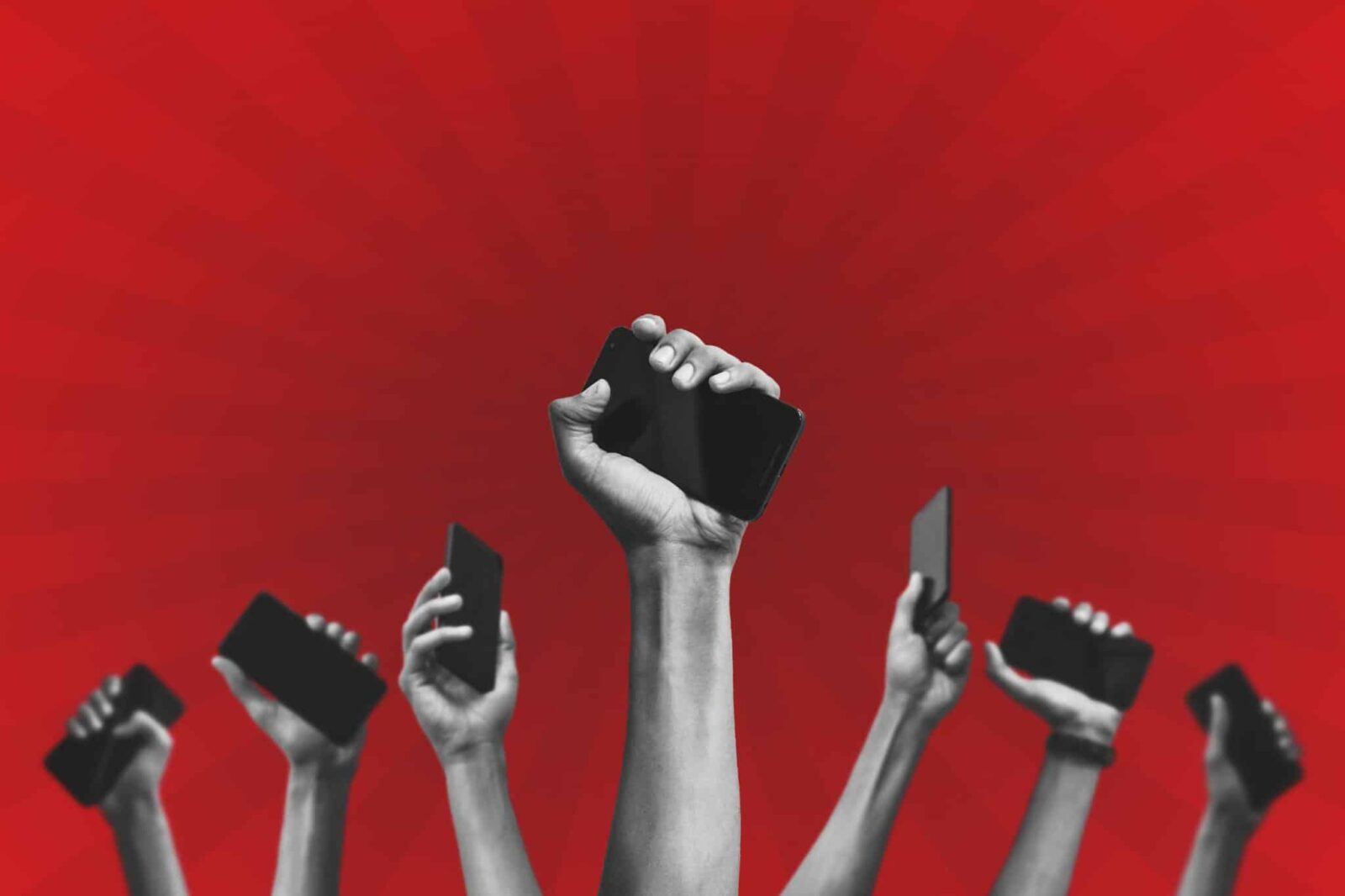

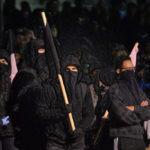
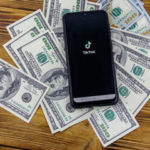





Leave a Reply